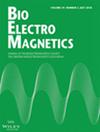Nur Syarah Zulaikha Mohd Razak, Anita Abd Rahman, Halimatus Sakdiah Minhat, Fatimah Ahmad Fauzi
求助PDF
{"title":"Understanding Electromagnetic Hypersensitivity (EHS) From Mobile Phone Radiofrequency Radiation (RFR) Exposure: A Mixed-Method Study Protocol","authors":"Nur Syarah Zulaikha Mohd Razak, Anita Abd Rahman, Halimatus Sakdiah Minhat, Fatimah Ahmad Fauzi","doi":"10.1002/bem.70007","DOIUrl":null,"url":null,"abstract":"<div>\n \n <p>More than 7 billion mobile phone users were recorded worldwide in 2022. Radiofrequency radiation (RFR) from mobile phones can produce radiobiological effects, which may lead to electromagnetic hypersensitivity (EHS) in humans. This study employs a mixed-method approach: the quantitative component identifies predictors of EHS from mobile phone RFR using the biopsychosocial model, whereas the qualitative component explores individual experiences that contribute to EHS. Quantitative analysis is conducted using the Statistical Package for the Social Sciences (SPSS) version 25.0 for descriptive and analytical statistics, whereas qualitative analysis is carried out with NVivo version 14 for thematic analysis. Findings from both analyses are compared and discussed to highlight similarities and differences, providing a richer, in-depth understanding of EHS resulting from mobile phone RFR exposure among undergraduate students. The study sample consists of 351 undergraduate students aged 18–25 from Universiti Putra Malaysia (UPM), conducted between April 2023 and December 2023. Approval was obtained from the Ethics Committee for Research Involving Human Subjects at UPM before the study. The quantitative component uses a proportionate simple random sampling method with a validated questionnaire, whereas the qualitative component utilizes purposive sampling through in-depth interviews. Enhancing understanding of EHS may contribute to new knowledge and raise awareness of its potential effects on the population. Bioelectromagnetics. 00:00–00, 2025. © 2025 Bioelectromagnetics Society.</p></div>","PeriodicalId":8956,"journal":{"name":"Bioelectromagnetics","volume":"46 4","pages":""},"PeriodicalIF":1.2000,"publicationDate":"2025-04-28","publicationTypes":"Journal Article","fieldsOfStudy":null,"isOpenAccess":false,"openAccessPdf":"","citationCount":"0","resultStr":null,"platform":"Semanticscholar","paperid":null,"PeriodicalName":"Bioelectromagnetics","FirstCategoryId":"99","ListUrlMain":"https://onlinelibrary.wiley.com/doi/10.1002/bem.70007","RegionNum":3,"RegionCategory":"生物学","ArticlePicture":[],"TitleCN":null,"AbstractTextCN":null,"PMCID":null,"EPubDate":"","PubModel":"","JCR":"Q3","JCRName":"BIOLOGY","Score":null,"Total":0}
引用次数: 0
引用
批量引用
Abstract
More than 7 billion mobile phone users were recorded worldwide in 2022. Radiofrequency radiation (RFR) from mobile phones can produce radiobiological effects, which may lead to electromagnetic hypersensitivity (EHS) in humans. This study employs a mixed-method approach: the quantitative component identifies predictors of EHS from mobile phone RFR using the biopsychosocial model, whereas the qualitative component explores individual experiences that contribute to EHS. Quantitative analysis is conducted using the Statistical Package for the Social Sciences (SPSS) version 25.0 for descriptive and analytical statistics, whereas qualitative analysis is carried out with NVivo version 14 for thematic analysis. Findings from both analyses are compared and discussed to highlight similarities and differences, providing a richer, in-depth understanding of EHS resulting from mobile phone RFR exposure among undergraduate students. The study sample consists of 351 undergraduate students aged 18–25 from Universiti Putra Malaysia (UPM), conducted between April 2023 and December 2023. Approval was obtained from the Ethics Committee for Research Involving Human Subjects at UPM before the study. The quantitative component uses a proportionate simple random sampling method with a validated questionnaire, whereas the qualitative component utilizes purposive sampling through in-depth interviews. Enhancing understanding of EHS may contribute to new knowledge and raise awareness of its potential effects on the population. Bioelectromagnetics. 00:00–00, 2025. © 2025 Bioelectromagnetics Society.
了解来自手机射频辐射(RFR)暴露的电磁超敏反应(EHS):一种混合方法研究方案
2022年,全球手机用户超过70亿。来自移动电话的射频辐射(RFR)可产生放射生物学效应,这可能导致人类电磁超敏反应(EHS)。本研究采用混合方法:定量部分使用生物心理社会模型从手机RFR中确定EHS的预测因素,而定性部分探索导致EHS的个人经历。定量分析使用社会科学统计软件包(SPSS) 25.0版本进行描述性和分析性统计,而定性分析使用NVivo版本14进行专题分析。对两项分析的结果进行比较和讨论,以突出异同,从而更丰富、更深入地了解大学生手机RFR暴露导致的EHS。该研究样本由351名年龄在18-25岁的马来西亚博特拉大学(UPM)本科生组成,于2023年4月至2023年12月期间进行。研究前已获得芬欧汇川大学人类受试者研究伦理委员会的批准。定量成分使用比例简单随机抽样方法与有效的问卷,而定性成分利用有目的的抽样,通过深入访谈。加强对EHS的了解可能有助于获得新的知识,并提高人们对其潜在影响的认识。生物电磁学。00:00 - 00,2025。©2025生物电磁学学会。
本文章由计算机程序翻译,如有差异,请以英文原文为准。

 求助内容:
求助内容: 应助结果提醒方式:
应助结果提醒方式:


